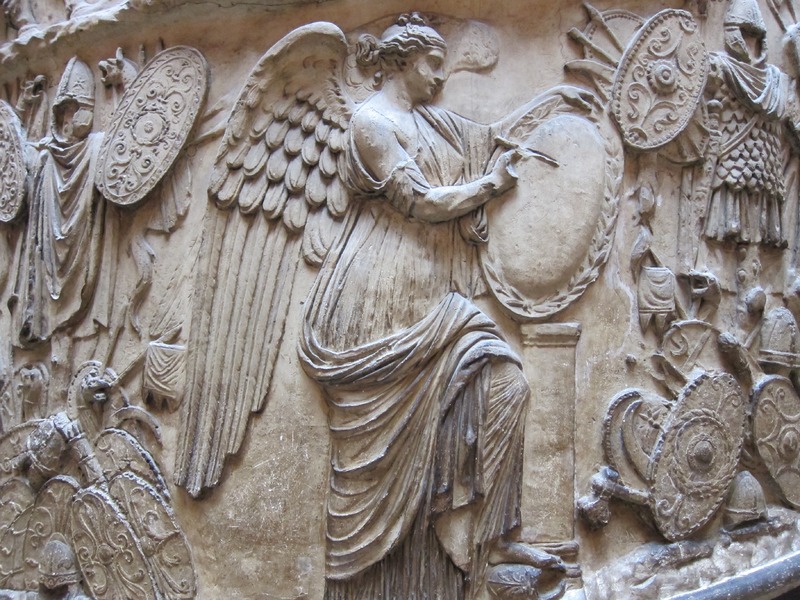Victory writing on a shield
Trajan’s column features a multitude of reliefs with symbolic and narrative qualities, all of which conveyed messages about Trajan’s victories, the successes of his army, and the power of the Roman people. As found on many commemorative monuments, the goddess Victory makes an appearance to symbolize a sort of divine congratulation. Victory is traditionally represented with an idealized female figure, whose desirous qualities are emphasized by the sensual draping of her garment.
On the Column for Trajan, Victory is shown in a relief that sits in between scenes that depict Trajan’s two encounters with the Dacian army.1 She stands in partial profile and inscribes Trajan’s accomplishments on a shield.2 Piles of what are presumably war trophies sit on either side. Victory’s pose and representation are not unfamiliar — the sculptor fashioned Victory with direct reference to the sculpture, The Victory of Brescia (69-79 A.D.), which became a popular image. This statue itself, however, holds an even more recognizable origin: the Aphrodite of Capua shows the goddess holding Ares’ shield in the same position. Together with Victory’s alluring physique, this reference to the goddess of love herself heightens the importance the Romans placed on the desirability of triumph, to the point where it was related to sexual appeal. Here, Trajan’s actual defeat of the Dacians gains further honor from these reliefs that mythicized and hence magnified his accomplishments.
1 Franceso Buranelli, et al., Between God and Man: Angels in Italian Art (Jackson: Mississippi Museum of Art, 2007), 53.
2 Buranelli et al., Between God and Man, 54.
